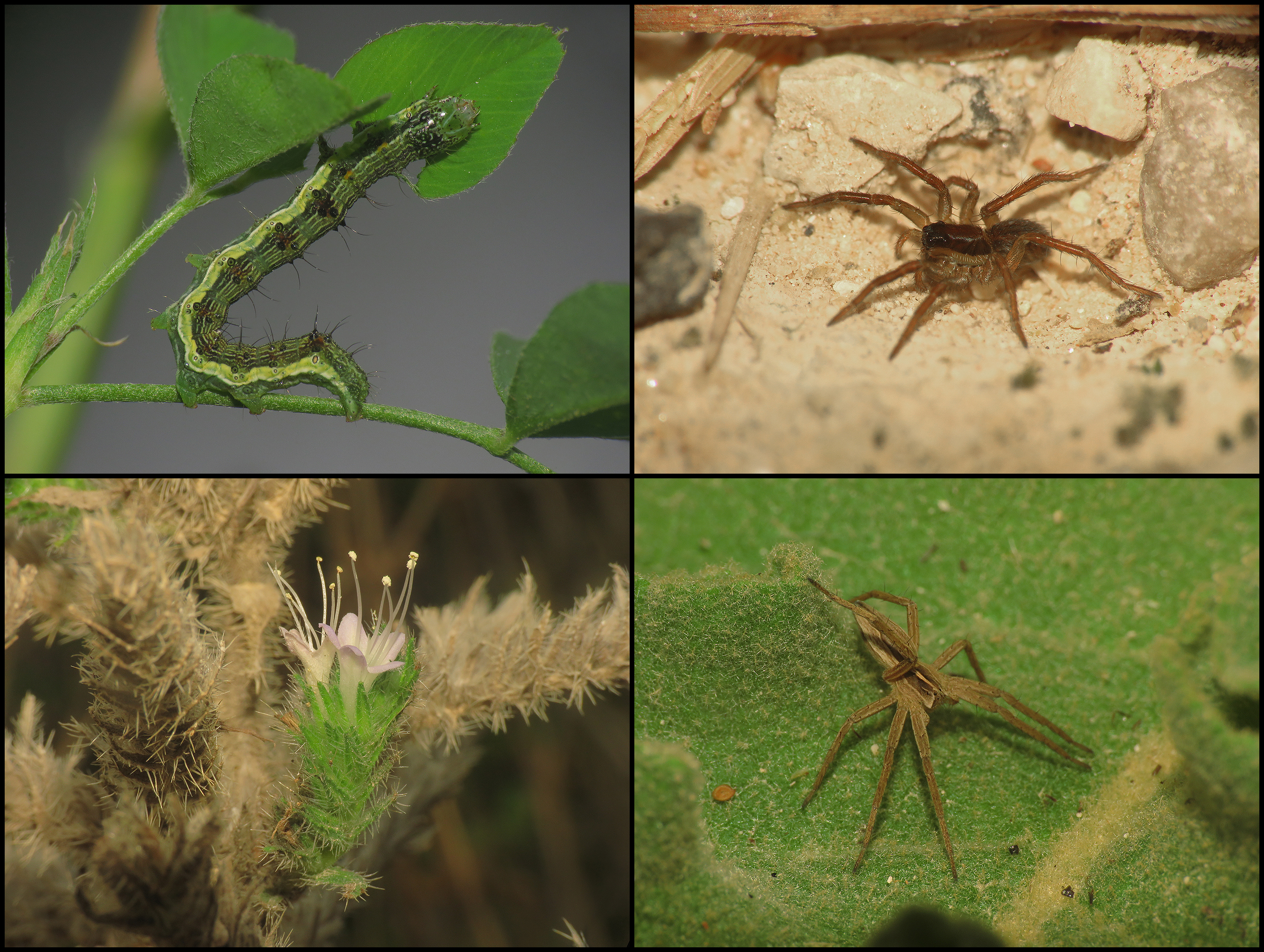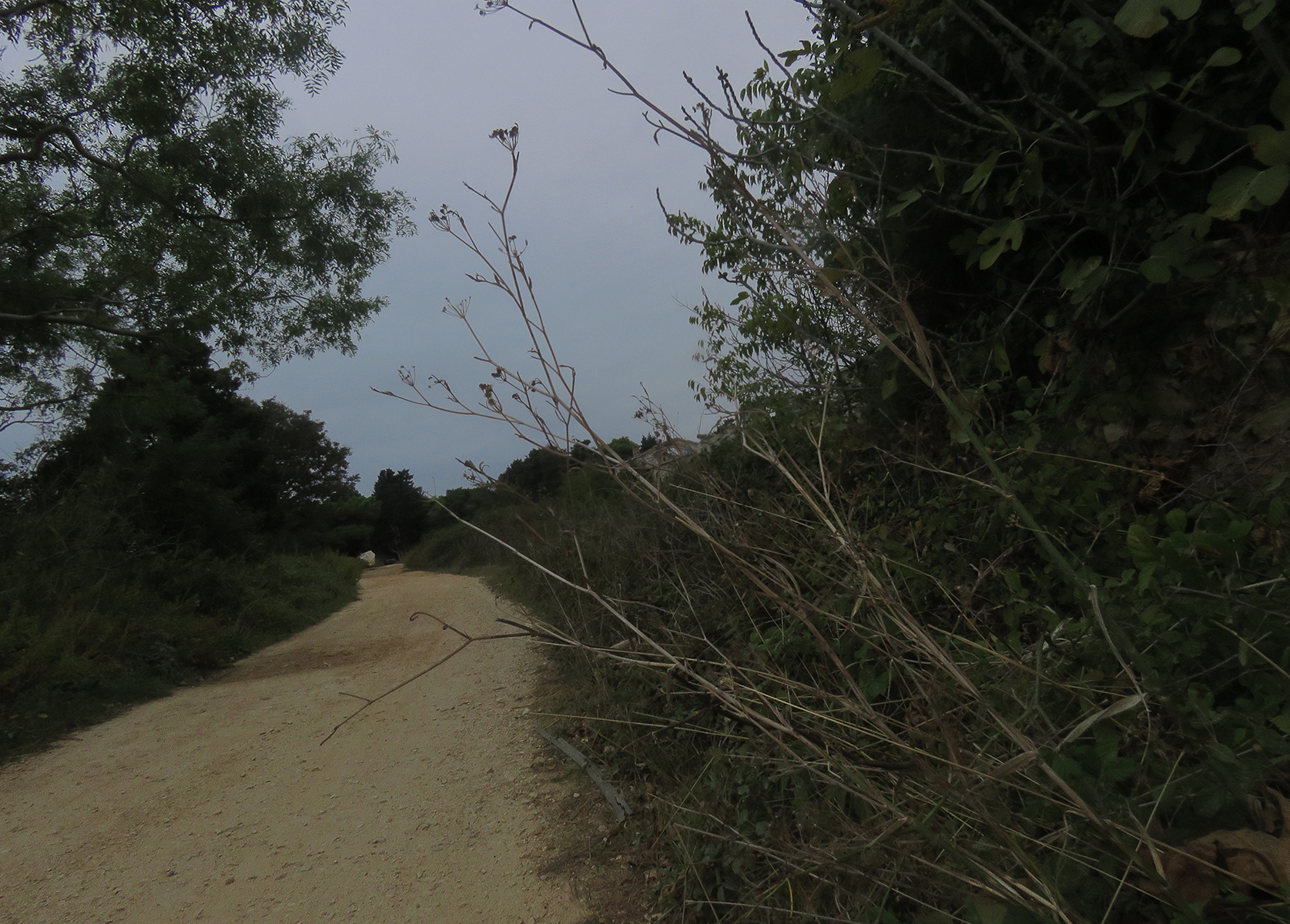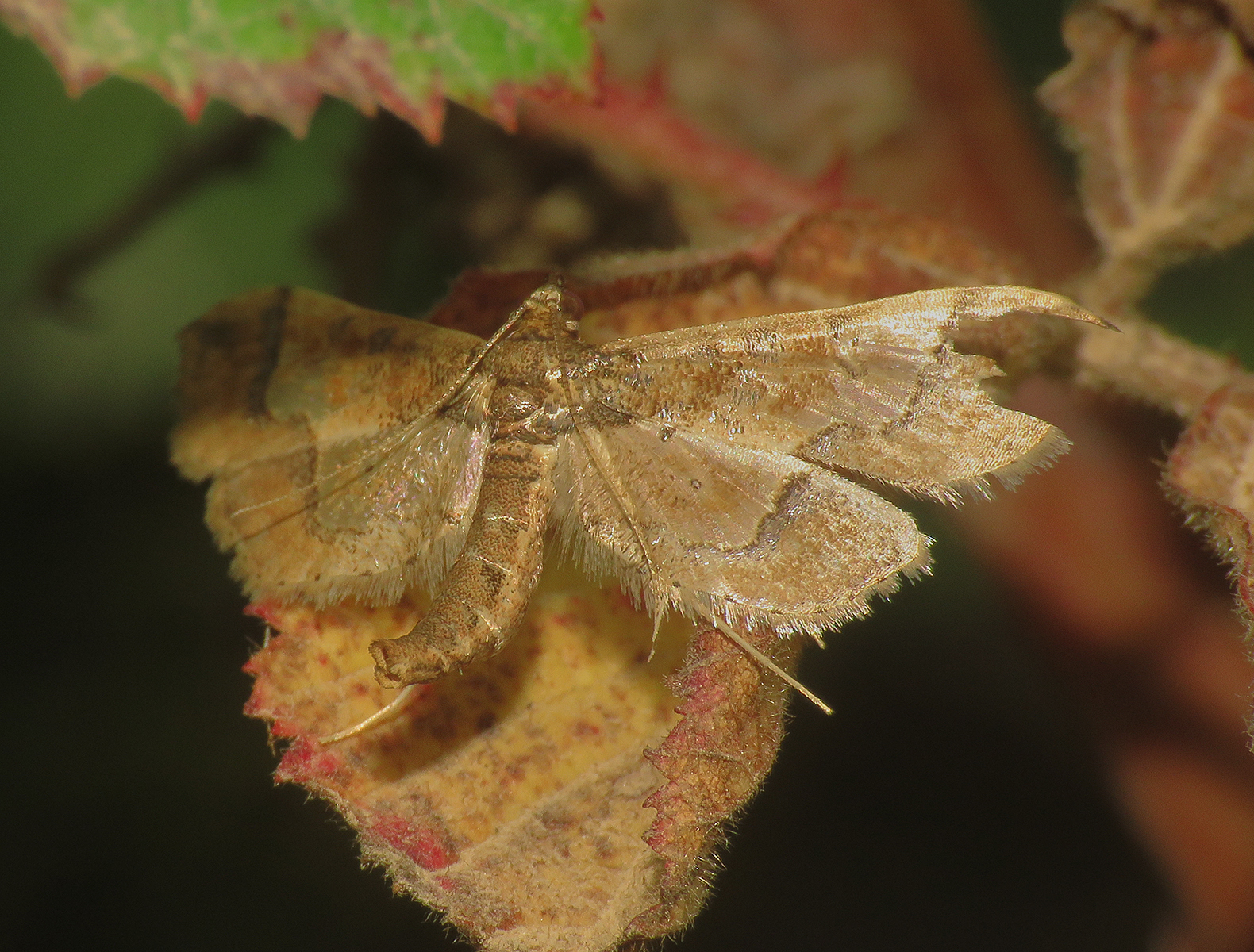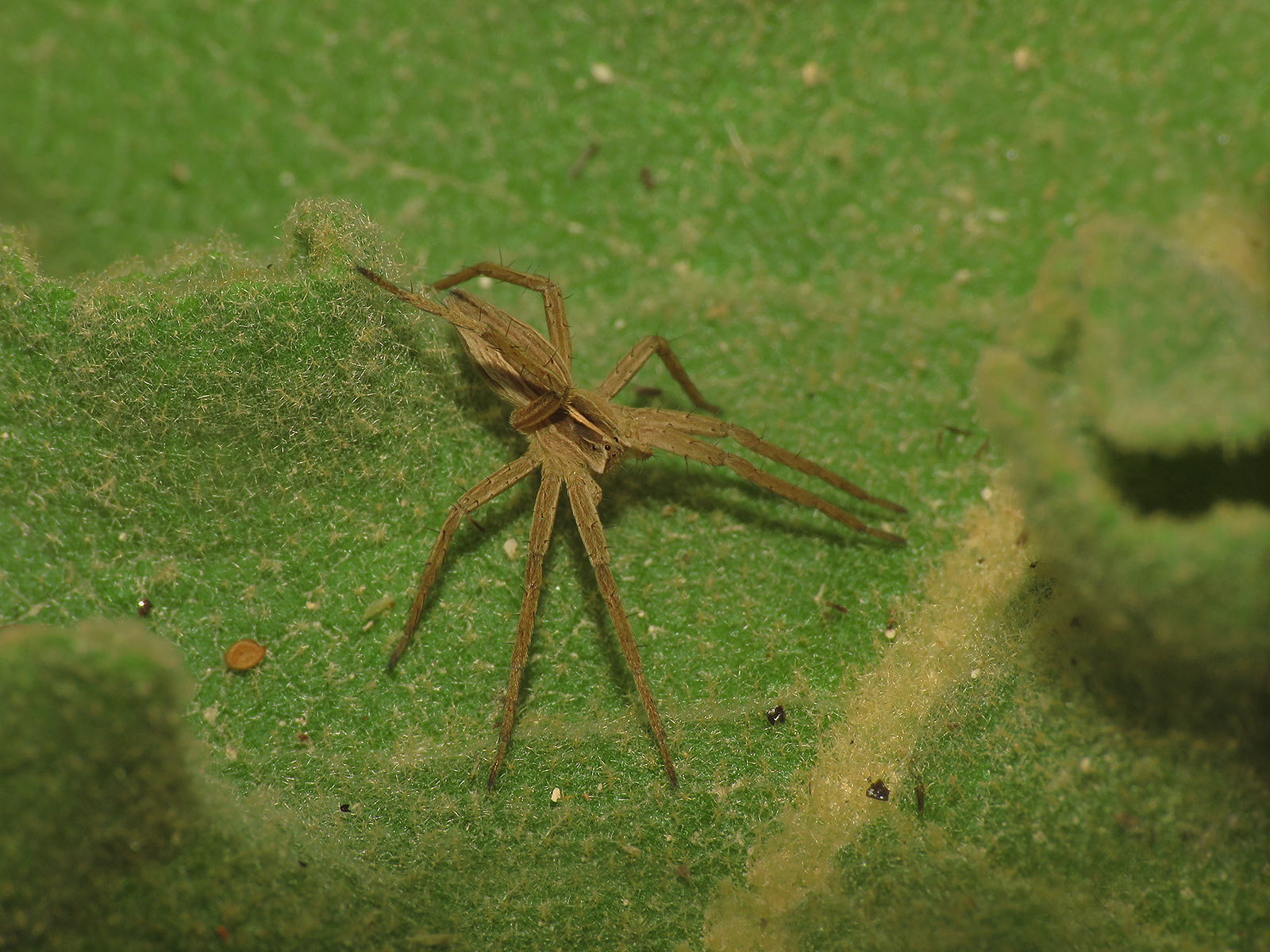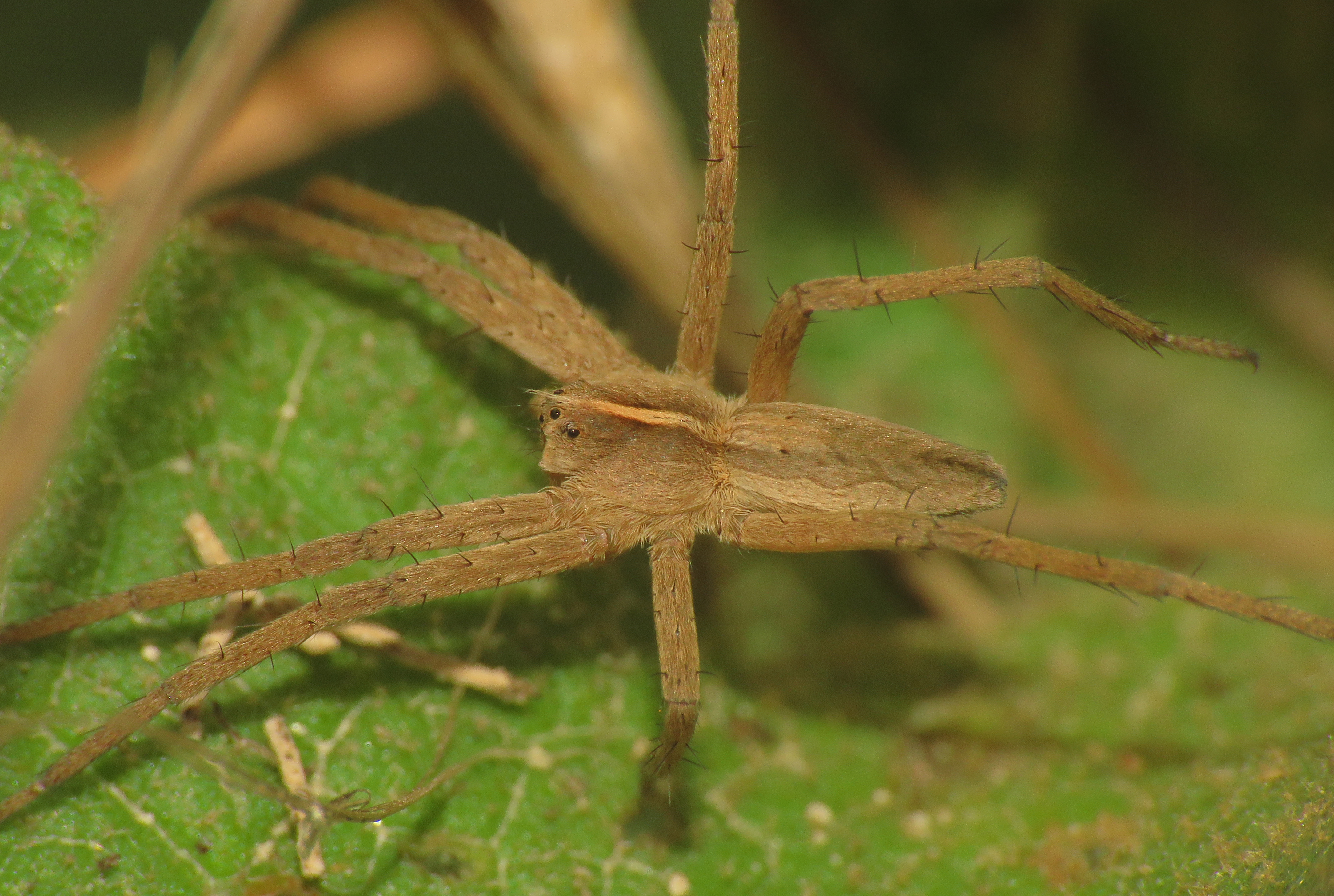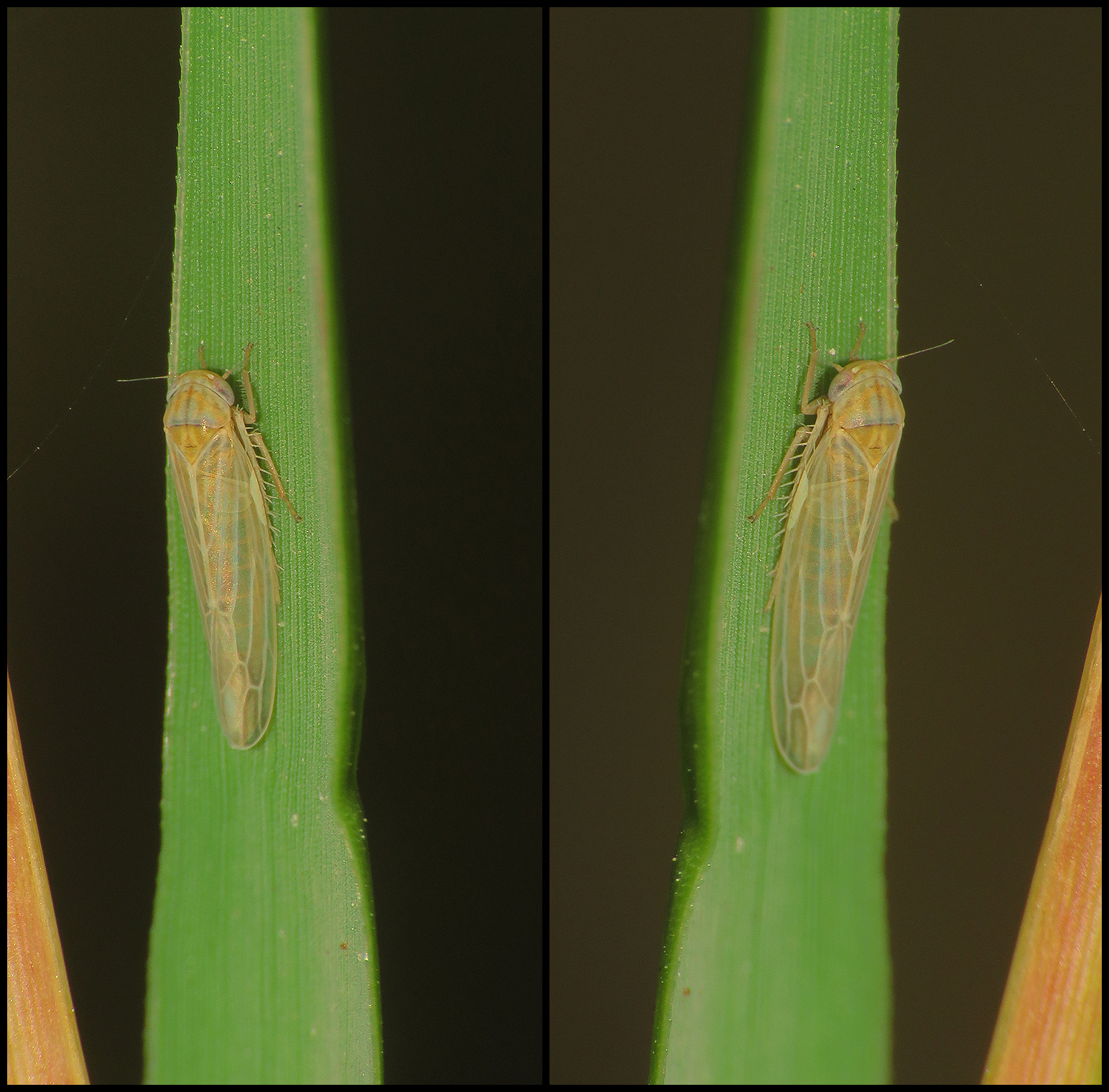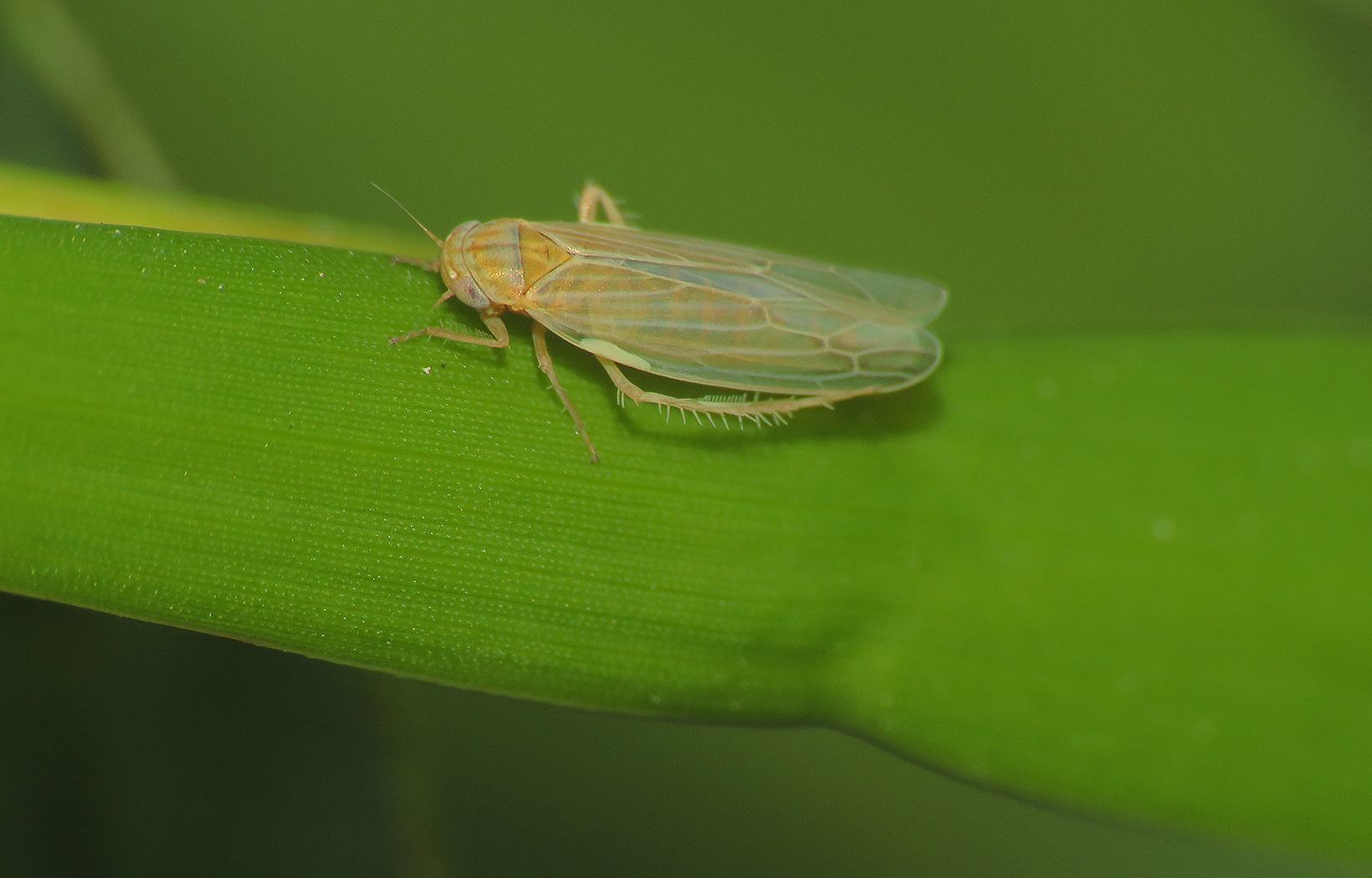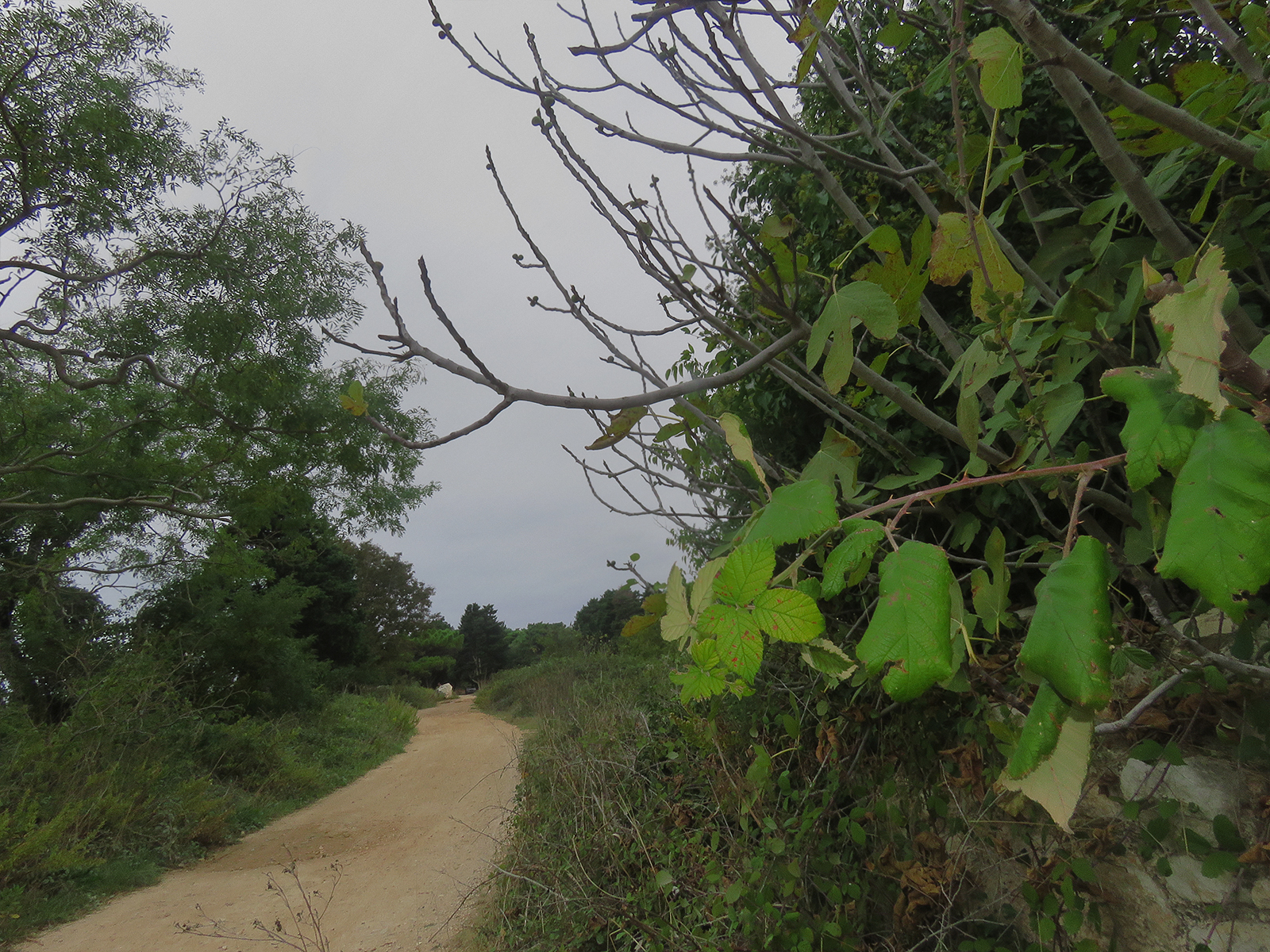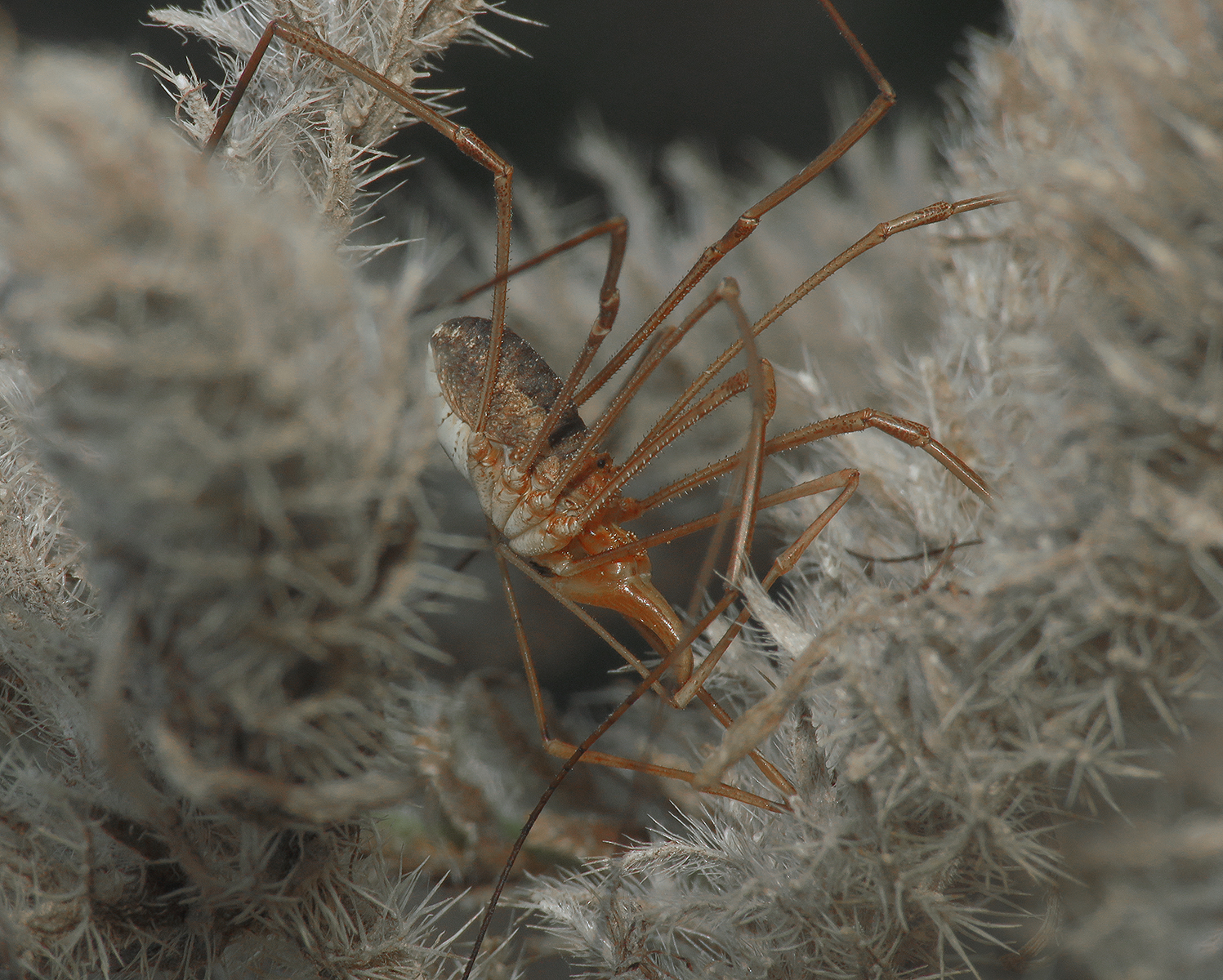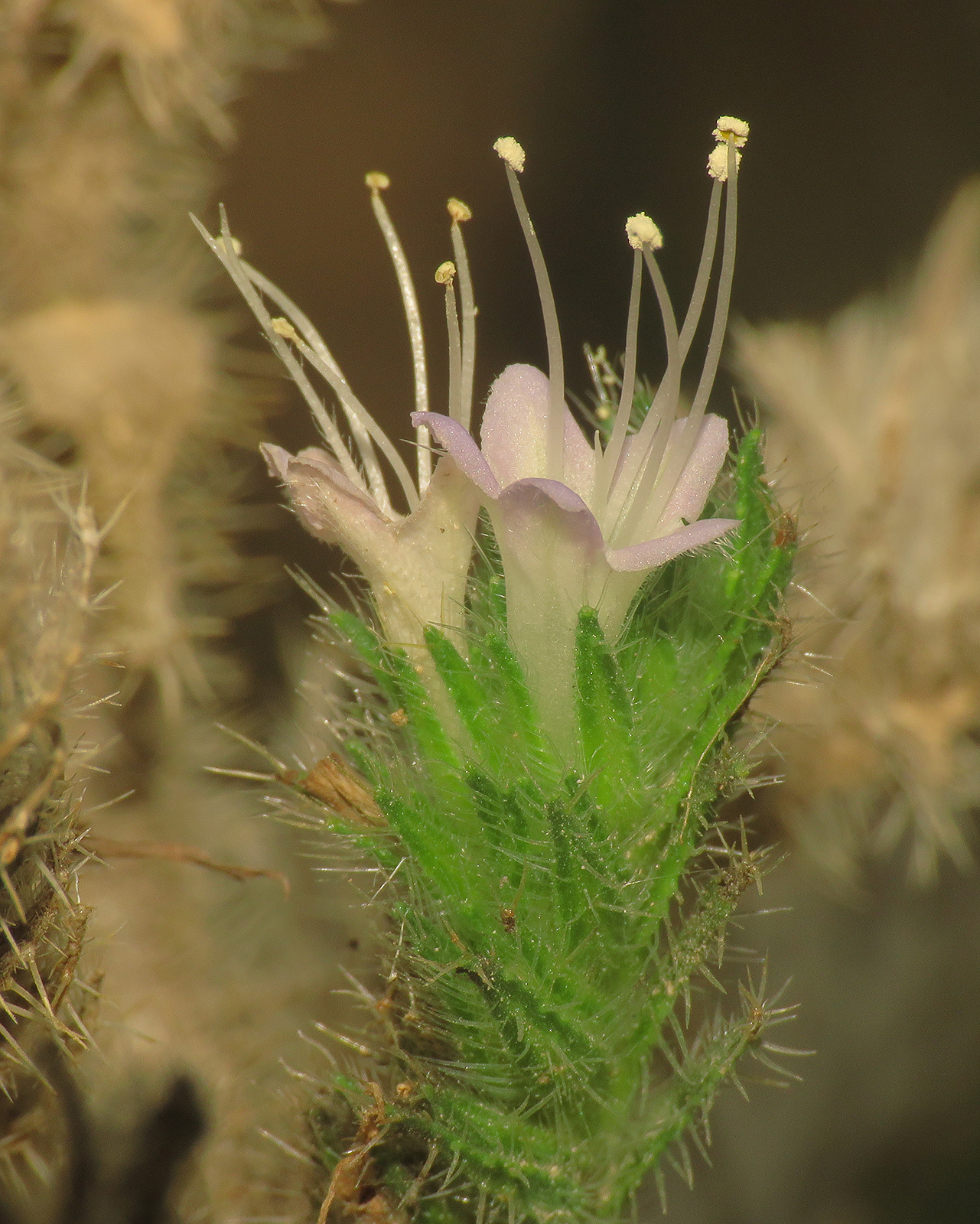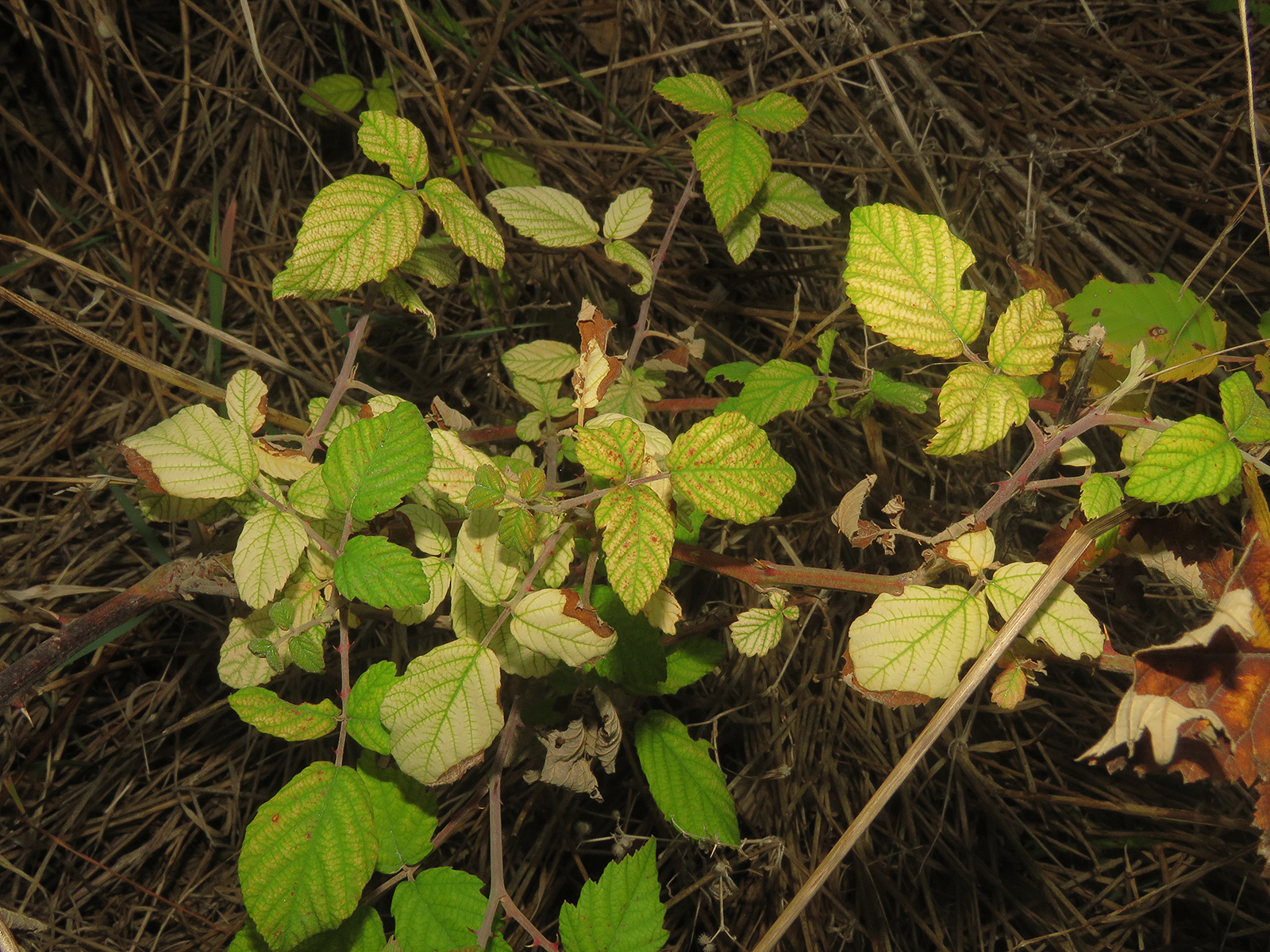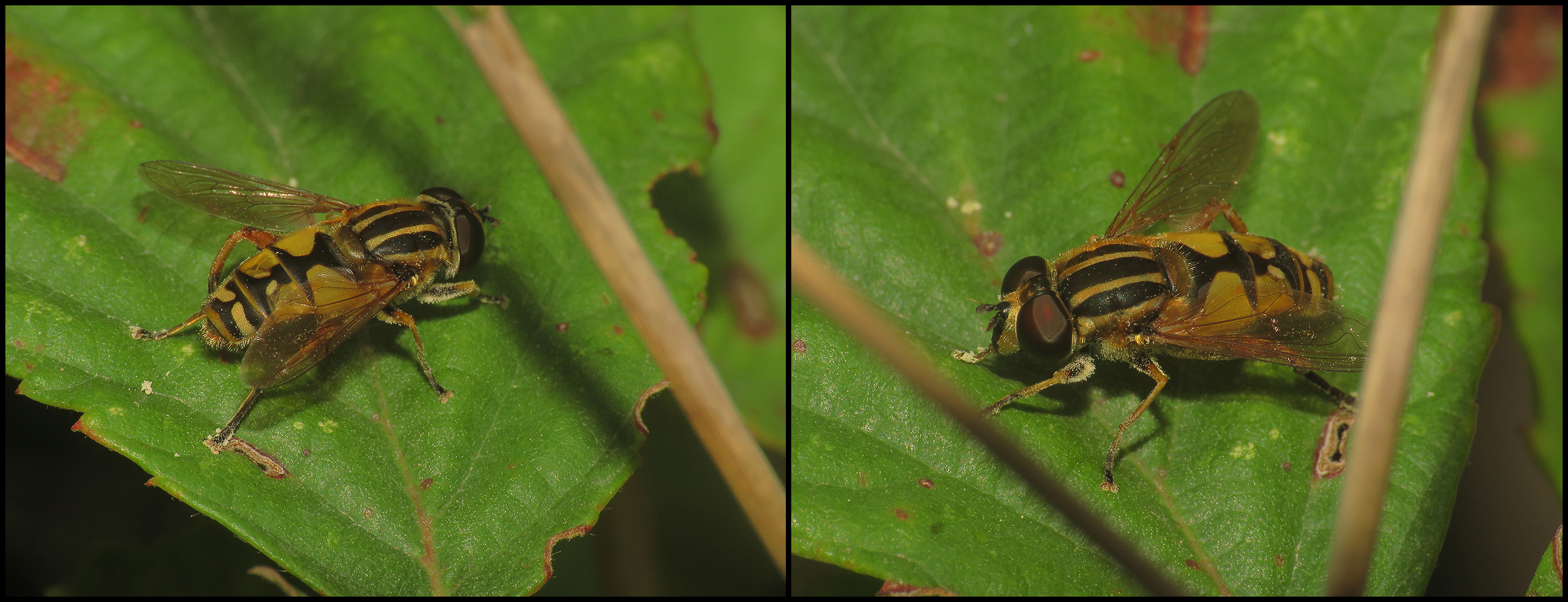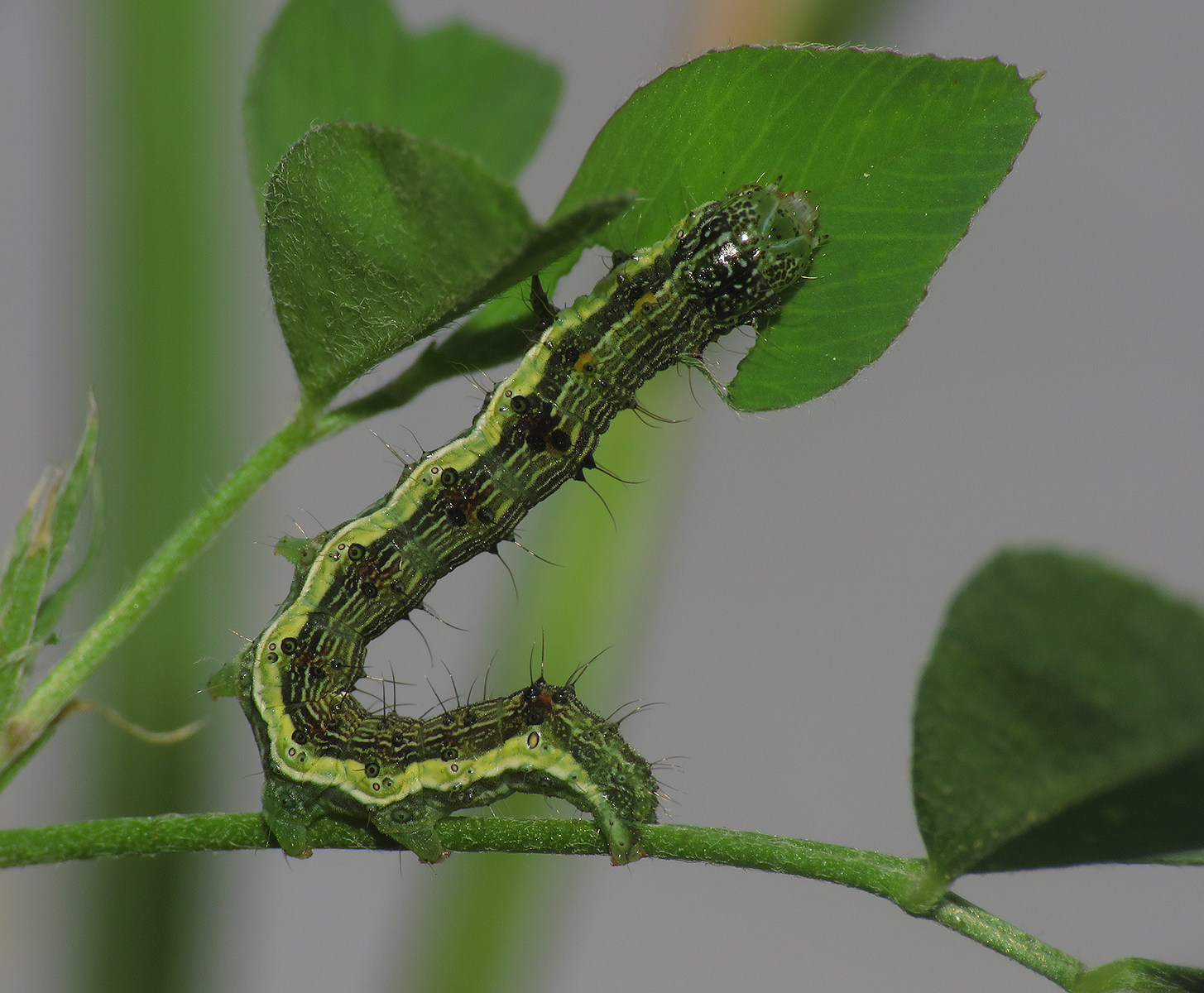It was a gloomy day, the layer of clouds was thick up there in the sky, but the weather was surprisingly warm. I mean, I wasn't surprised back then on the 29 of October becouse that's quite normal in that period, but it was definitively much warmer than the following photographs may suggest.
So, since this is another episode of the MACRO OCTOBER IN MARLERA series, it means that all the stuff you'll see here today was photographed in Marlera, the coastal area situated a couple of kilometers from the village of Liznjan and about five or six kilometers from where I live. Have a good viewing.
In this wide shot, you can take a look at the setting and the overall atmosphere. I came across a nice variety of plants and small arthropods while walking u & down the gravel road that leads through the center of this two-dimensional picture and the center of Marlera in the three-dimensional reality, as well.

This is the Hydriris ornatalis ...
... a moth from the Crambidae family. The moth was resting on one of the very few brown leaves of the lush, green blackberry shrub by the side of the road.

On one of the green leaves of the same shrub, I found this grasshopper from the Acrididae family.

The name of the species is Acrotylus insubricus.

This Pisaura mirabilis ...
... a spider from the Pisauridae family was resting in its typical pose ...

... on one of the juicy leaves near the center of the large rosette formed by the Verbascum undulatum plant.
Another spider of the same kind ...
... was resting near the outer edge of the same circle of leaves.

This Balclutha frontalis, a leafhopper from the Cicadellidae family ...
... was photographed on tall green grass that was growing (I mean, it still probably grows) about twenty or thirty meters further by the side of the same road.
In the following photograph ...
... the leafhopper is cleaning its wings.
Here you can take another look at the road that serves as some kind of narrative backbone of this post. The wide shot also provides a good opportunity to take a short break from the macro view.

At one point, I came across this interesting Echium italicum plant. While all the other plants of that same kind I saw in those days in Marlere were completely dry ...

... this one still had a couple of flowers on it.
Those fresh details surrounded by dry tissue definitively looked cool in photographs. Contrasts always create a sense of story, of something that a photograph has to say, no matter how vague and elusive it could be.
I also found this long-legged arachnid there, on the same Echium italicum plant.
It's a harvestman. The Phalangium opilio ...
... commonly known as the common or brown harvestman. Daddy Longlegs is also one of the English common names I found on the Internet, but I'm pretty sure that name applies to some long-legged spiders as well.
The small Echium italicum flowers surrounded by all those hairs, or trichomes, more precisely - that's what the hairs on plants are called, look great when seen through the macro lens.
Here you can see a bunch of pale, yellowish blackberry leaves among the usual green ones. The scientific name of the blackberry shrubs that grow in Marlera is Rubus ulmifolius. On one side the road was bordered by a relatively tall green wall made of various shrubs, while on the other side ...

... there was a stretch of terrain covered prevalently with Dittrichia viscosa, a plant that appeared in quite a few previous episodes of this series.

Some of the Rubus ulmifolius leaves were nicely "decorated" with red dots and circles provided by the microscopic fungus scientifically known as Sphaerulina westendorpii. On one of those colorful leaves, I photographed this fly from the Syrphidae family. The name of the species is Melanostoma scalare.

This Sphaerophoria interrupta, another species from the Syrphidae family ...

... was resting on the nearby grass.
A bit later, on another blackberry shrub, I found the Helophilus trivittatus, the third and last Syrphid fly of today's episode.

In the grass under the shrub ...

... I photographed the Chorthippus brunneus grasshopper. This is a Chorthippus brunneus male. If you are a die-hard fan of this series, if you saw each detail of each episode, and therefore remember seeing a Chorthippus brunneus grasshopper that doesn't look like the one shown in this and the previous photograph, that's becouse the color is very variable in this species.
This small, juvenile Hogna radiata spider was crossing the road when I caught him in these three photographs.

Here you can see a moth caterpillar feeding on the leaves of a plant from the genus Medicago of the Fabaceae family.
Since I forgot to take a clear photograph of the leaves, seeds, or flowers of the plant back on the 29 of October, I wasn't able to identify the exact species today while writing this post.
In this shot, you can see the same scene but the background is slightly different. When it comes to the caterpillar, this is the larval stage of the Helicoverpa armigera, a moth from the Noctuidae family. Helicoverpa armigera appeared at least a couple of times in this series but always as a caterpillar. I haven't seen any adult moth this year.

Here you can see a crab spider with its prey.

Xysticus kempeleni, a spider from the Thomisidae family has caught an ant. A Messor wasmanni worker. With the following photograph ...
... we have reached the end of the road. I mean, figuratively. The road goes on in reality but the post must end here becouse I don't have anything else to show.
HOPE YOU ENJOYED THE JOURNEY. AS ALWAYS HERE ON HIVE, THE PHOTOGRAPHS ARE MY WORK - THE END.
The following links will take you to the sites with more information about some of the protagonists of this post. I found some stuff about them there.
https://en.wikipedia.org/wiki/Hydriris_ornatalis
https://en.wikipedia.org/wiki/Acrotylus_insubricus
https://en.wikipedia.org/wiki/Pisaura_mirabilis
https://truehopperswp.com/public/species/balclutha-frontalis
https://en.wikipedia.org/wiki/Echium_italicum
https://en.wikipedia.org/wiki/Phalangium_opilio
https://en.wikipedia.org/wiki/Rubus_ulmifolius
https://en.wikipedia.org/wiki/Melanostoma_scalare
https://pnwhandbooks.org/node/2296/print
https://www.gbif.org/species/1536614
https://en.wikipedia.org/wiki/Helophilus_trivittatus
https://en.wikipedia.org/wiki/Chorthippus_brunneus
https://en.wikipedia.org/wiki/Hogna_radiata
https://en.wikipedia.org/wiki/Helicoverpa_armigera
https://www.gbif.org/species/2165253
